Todd Smith and Stacey Ocander on Pathways Strategies to Address the Healthcare Workforce Shortage in Nebraska and Beyond
Key Points
-
You have to have a what next, otherwise it’s not a pathway. It’s just a program.
-
Pathways are about discovering and being discovered.
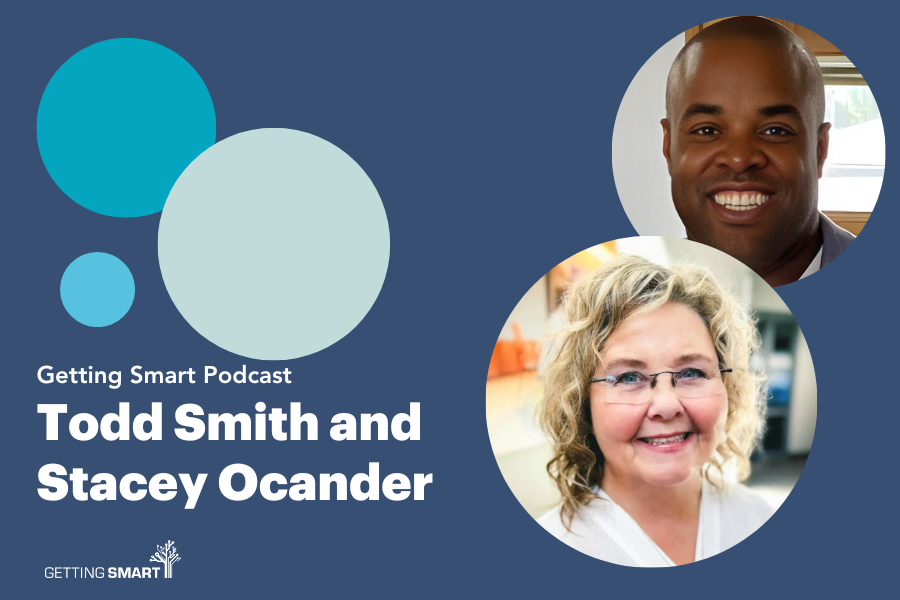
On this episode of the Getting Smart Podcast, we’re joined by Todd Smith, past podcast host and guest and CEO of Symphony Workforce, and Stacey Ocander, Senior Director of Workforce and Education Initiatives at Nebraska Hospital Association to discuss their collaborative efforts to address the healthcare workforce crisis in Nebraska. Stacey discusses the innovative statewide curriculum she developed for third to fifth graders, which introduces students to various healthcare professions through active learning and partnerships with local hospitals and nursing homes. This program aims to spark early interest in healthcare careers and create a seamless educational pathway from elementary school through undergrad. The curriculum includes practical, hands-on experiences such as doing buckle swabs and examining cells under a microscope, making healthcare professions accessible and engaging for young students.
Todd and Stacey further elaborate on their approach to bridging the gap between education and healthcare industries. They emphasize the importance of experiential learning and the role of technology in facilitating this connection. Their partnership has resulted in a comprehensive program that includes summer camps, industry challenges on the Find the Why platform, and a hybrid internship model for high school students. These initiatives not only provide students with relevant certifications and skills but also help them build a digital resume that can be accessed by potential employers. This model aims to ensure that students are well-prepared for healthcare careers, thereby addressing the workforce shortage and promoting economic stability in Nebraska’s rural communities. The episode underscores the significance of early career exploration, continuous support, and scalable solutions in creating a robust healthcare workforce pipeline.
Outline
- Introduction to Health Science Pathways
- Nebraska Hospital Association’s Role
- Addressing the Workforce Crisis
- Creating Health Science Pathways
- Expanding Opportunities and Future Vision
Introduction to Health Science Pathways
Mason Pashia: You’re listening to the Getting Smart Podcast. I’m Mason Pashia. We see careers in health science and healthcare as a massive opportunity for young people to connect to purpose, achieve economic mobility, and fulfill a significant workforce need. Recently, we published a Health Science Pathways Appendix as part of our New Pathways Handbook, highlighting innovative models and partnerships in this sector. It offers recommendations for upgrading your current health sciences program or starting one. Today, we’re exploring what one state is doing to meet the workforce crisis and prepare students for careers in health science. We’re joined by Todd Smith, past podcast host, guest, and CEO of Symphony Workforce, and Stacey Ocander, Senior Director of Workforce and Education Initiatives at the Nebraska Hospital Association. Todd, Stacey, thank you for being here.
Todd Smith: Thank you.
Stacey Ocander: Good morning.
Mason Pashia: It’s great to see you. Stacey, that is a very cool title. Are you the first person in that role?
Nebraska Hospital Association’s Role
Stacey Ocander: I am. I even got to think of my own title. I wanted it to be something like “Chaotic Disruptor,” but I thought that would be a little odd on a business card. So we went ahead and went with something a little more fancy. But yeah, it’s the first time for the Nebraska Hospital Association to have this position, and it’s really about bringing people together—the educators, which is my background, and then also the hospitals and practitioners, which was my early life. I’m having a great time and just learning how to do business unusually.
Mason Pashia: Can you give a quick overview of what the Nebraska Hospital Association is for our listeners who may not be familiar?
Stacey Ocander: We are an association that represents and advocates for 92 hospitals across our state: critical access hospitals, specialty hospitals, and our large systems. We’re really their voice with the legislature. We are their voice for workforce advocacy, data quality measures, and all of those things that we do. And I believe we do it well. When you advocate for hospitals, you advocate for the communities. You advocate for every person touched by any type of disease, trauma, fear of healthcare, limited access. The list goes on. The association represents all of those folks in our state, and each state has one.
Addressing the Workforce Crisis
Mason Pashia: That’s great. Thank you. It sounds like you are closely involved with the broader healthcare ecosystem. What are you seeing that defines this as a workforce crisis in healthcare? What are the challenges people are trying to overcome or the trends they are seeing?
Stacey Ocander: We could name many things as workforce issues, right? We could throw anything into that bucket of workforce. But it is literally, at the end of the day, about making people happy to go to work and getting them the education that is relevant. It’s not just about having multiple letters behind our names. I have my doctorate. Very rarely do you hear me use that word. It’s about being very deliberate in the education people need to perform at the highest level of their scope. We have protective measures with boards and things like that, but it’s not just about recruiting; it’s about retaining people, especially in rural America. That is critical. It’s also about teaching young people that I’m a farm girl, proud to have my roots, and it’s a great place to live. So when you think about workforce, are you thinking about other places to live and people to serve? That’s how it all really falls together. We just call it workforce.
Todd Smith: To add to Stacey’s point, if you look at any community, there are two things necessary to keep a community alive, especially in rural America. You need to have a healthy school system and healthcare. If either of those leaves—say, I lose two nurses and a doctor—then the closest significant healthcare is now 150 miles away. That town struggles to exist. If my school closes, my kids have to get on a bus and drive 75 miles to go to school. That town closes, right? And that goes for midsize towns too. Omaha is the 40th largest city in the country, which is amazing to say. But if we lose significant healthcare workers, like the 4,000 nurses we are short in Nebraska, think about what that means for cities, communities, and people in other states like California, Maryland, North Carolina, or Georgia.
Mason Pashia: One thing you highlighted, Todd, is you have to want to have a healthy school system. That is an easy thing to gloss over, but it is so important. Much of this work starts with seeing that it could be better.
Creating Health Science Pathways
Stacey Ocander: Adding on to that, I’m a rural girl. I love the education I received. We had 58 in my graduating class and I went to smaller colleges. Sometimes people have the misconception that schools in rural areas are poor or lack advantages and technology. Even with our smaller hospitals, if you do a rural rotation, you may be here one minute and there the next. There are great experiences everywhere, whether it’s in a town of a thousand people or a half a million people. It’s about who you are as a person, your values, and what you want to do.
Mason Pashia: I’m curious about how you two have come together to address this challenge specifically in Nebraska. Who wants to start with that?
Todd Smith: When we started Simply Workforce five or six years ago and were growing, the thing we were always missing in any given industry was someone on the other side of the table who understood both education and was chartered to tackle workforce. We have a relationship with NHA (Nebraska Hospital Association). They said, “Hey Todd, just wait. We’re bringing on someone you’re going to love to handle workforce.” I asked how long I needed to wait. I had been waiting for five years. Finally, we meet at a coffee shop, and in about an hour and a half, we realize we’re going to change the world. We’re going to figure out how to build a pipeline from third grade through undergrad. It’s broken into two specific pieces: third through 12th grade and then undergrad. The third through 12th grade feeds into undergrad. Any state can implement this so their kids can discover and be discovered in healthcare. Once that happens, they can pull into internships and start getting recruited just like they were athletes. It couldn’t happen without Stacey because of her background in healthcare as a practitioner, as a dean and an innovator, and as a creative disruptor. In her new role, being trusted and loved by everyone in our state because she’s brilliant, we’ve built this program. Stacey, do you want to take it from there and put some meat on that bone?
Stacey Ocander: You bet. Over a year ago, we had been meeting as a state—educators, hospitals, the Nebraska Hospital Association would bring us together—and it felt like Groundhog Day. We kept having the same conversation: the sky is falling, this is happening. But we were only looking at what happens to students in grades 10 and 11. We have great CTE programs, but they are a splash in the pan, a moment in time. The Nebraska Hospital Association, the Nebraska Healthcare Association, Medica Insurance, and the Nebraska Medical Association believed in the concept that this has to start in third grade. If you ask any child what a nurse or doctor is, they will tell you. But if you ask about a medical lab scientist or radiology technician, they look at you like, “Huh?” We needed to get them excited. So I wrote a statewide curriculum for third through fifth grade. We launched a pilot in the spring at eight schools in our state, in after-school programs. Starting in the fall, we will have over 2,000 students enrolled because we have great K-12 students and partners who believed in this. It’s free in our state. We use college health science students to facilitate it, and they get their service learning points for scholarships. The piece that was missing was experiential learning for students in grades 10, 11, and 12. They need internships, but not the cumbersome ones we’ve been doing. The kids get bored, and people aren’t sure what to do. We need to build it around summer camp so these kids are supported all year, not just during the school year. For the superintendents and principals—my whole family is in education—we made sure this program didn’t increase the workload of people who are already overworked. Then I was introduced to Todd, and designing the internships was what we were missing. The link to connect K-12 to undergrads seamlessly and make sure every student is wanted.
Mason Pashia: Can you tell me a little bit about the third through fifth grade curriculum? What are the students doing or learning in that experience that sets them up for what’s next?
Stacey Ocander: You bet. It’s one hour a week in the after-school programs. We’re working to get it into the daytime curriculum for communities without an after-school program. We have programs running this summer in libraries, churches, and Boys and Girls Clubs. The entire curriculum has a facilitator guide. Anyone not in health could still facilitate this program because I’ve laid out all the objectives. We supply them with the equipment they need. Everything was built on the American School Counselor standards for mindset and behavior. We have to build those in. I always say it’s called “tricking with learning.” There’s math, science, English, even art and music built into the curriculum, and the students never know. If they say they hate math, guess what? They just did it. Each week they have an hour, and the first seven weeks they explore their value system. At that level, it’s called the Healthcare Heroes Program. It’s about what their values are, what they can do, what they are good at, and what they like to do. They partner with a nursing home or assisted living and one of our hospitals. We don’t spend money buying a wheelchair, crutches, or a walker for one week. Our partners lend those to us. Our colleges lend the programs their microscope. We have third graders doing buccal swabs, getting cells from their cheek, doing a wet mount on a slide, and looking at it under a microscope.
Mason Pashia: That’s amazing.
Stacey Ocander: And it’s every week. They have their own workbook where they journal. The key to the entire program is active learning, 100% active learning. By the end of the school year, they will have been introduced to 32 different health professions. The goal is to expose them to all these professions. In middle school, we narrow it down to say, “I do want to be in health. I like these 14 things.” In 9th and 10th grade, they do internships with us and HOSA and other organizations. By 11th and 12th grade, they are down to about six interests. We start partnering them with our hospitals, and through the work on the platform with Todd, we determine where they will intern and what challenges they will take. By the time they are juniors or seniors, they are down to about two interests.
Expanding Opportunities and Future Vision
Mason Pashia: When they go into middle school, what does it look like for them to narrow it down to six? Are they taking certain offered classes at the middle school level, or are they still with you all and doing something like summer camps? What does it look like to narrow it down?
Stacey Ocander: I wrote summer curriculum for two-week, four-hour-a-day summer camps facilitated by our community colleges and universities. When we get to those summer camps, the educators narrow it down because we’ve done interest inventories and challenges with Todd. We start to see what type of students they are. We may offer a one-week class exposing them to four professions. The people working in those professions and teaching in those professions are the ones running the summer camp. On Monday, it might be a respiratory therapist who is also a professor and works at a hospital. Tuesday, it might be a medical assistant. Wednesday, an X-ray technician. Multiple camps are running, so they start to see what they like. There’s a place in healthcare for everybody, and it doesn’t have to be patient care. It can be dietary, recreational therapy; there are so many things. Obviously, I could talk for probably 385 days a year about this program because when we see pictures of kids using reflex hammers in third grade and they can tell you what it is and what it does, and they don’t think nursing homes are just places to die, and they are no longer scared to go to the hospital—that’s life-changing.
Mason Pashia: Totally. I love how your third-grade experiences start with helping students find their purpose and their “why.” So many people enter this sector because of an experience they had in their personal life. They want to become a nurse or doctor because someone close to them struggled and received exceptional care. They think, “This is amazing.” I love that you’re focusing on that so early.
Todd Smith: One of the great things about our partnership is that Stacey explained this amazing curriculum and experience for kids in third through fifth grade. Now they’re in summer school in sixth grade, experiencing summer camps. When they enter seventh grade, they are eligible to jump onto our Find the Why platform. Of the industry challenges on the platform, we will always have a healthcare challenge. The student gets to reinforce their interest in healthcare. Every healthcare challenge is different—it could be about HIPAA, infectious disease, pandemics, and so on. The student figures out if they are hands-on, innovative, or process-driven but still want to be in healthcare. Their personal experience connects with their aptitude and will to continue choosing healthcare. They take assessments to understand who they are inside of healthcare from sixth to ninth grade. Stacey has a gift for industry badging. As students take challenges and start learning, they are offered badges for specific skills like CPR or HIPAA. They build a resume for themselves and for the industry to start recruiting them, keeping them in their home state or city. It all happens in real-time and together.
Stacey Ocander: Absolutely. One of the largest costs to hospitals is onboarding. There is resistance to internships for kids not formally in a program because of onboarding. We are front-loading it so hospitals don’t have to worry. When hospitals pull up a digital resume, they will see these badges and know the student is ready to go. These are the same certifications our nursing, respiratory, and undergrad students are taking. It’s stackable learning. They do a challenge on bloodborne pathogens, followed by a badge, quiz, and module. That badge shows up at the top. What better way to get kids excited than to say, “Look what I’ve already learned, and I’m 16. I can hop in that hospital with the same onboarding as a freshman in college.”
Mason Pashia: Todd, those challenges on the Find the Why platform are sourced from different clients and companies within the community, correct?
Todd Smith: Absolutely. Specifically, the healthcare challenges. We just developed the first draft of all five healthcare challenges for next year. Stacey is reviewing those this week to get way ahead and ensure we are connected all the way through. There are four challenges throughout the year: September, November, February, and April, each lasting 10 days. Kids jump on and see challenges—no less than six from industry. Once they choose healthcare, they are in the healthcare challenge on their phone, iPad, during school, on the way to practice, late at night. They gamify their way to discovering if healthcare is where they want to be or if they want to pivot to military, engineering, CDL driving, or something else. The key for hospitals and most industries is they don’t know what to do with kids once they get them. Even if they recruit the right kid, they don’t know what to do. We changed how internships will go forward. It’s six hours on-site per week, with the student working diligently because of their digital resume. Then six hours back on our platform doing a challenge from that hospital or NHA, associated with their work that week. Three hours of a module go to a specific certification accepted by every hospital in the state. That’s 15 hours a week of a hybrid internship. The hospital wins because they’re not overtaxing their employees. The student wins because they’re engaged, back on technology, getting instant feedback and certification. It’s all recorded on our platform, which they can move with wherever they go. They get paid $3,000 over 10 weeks. The kid still gets to be a kid, participating in activities while chasing their future in healthcare.
Mason Pashia: You mentioned the undergrad component. Are there parts linked to dual credit or school-recognized credit, or is it still all extracurricular at this point?
Stacey Ocander: A lot of schools have their own dual credit, managed strictly through them. Many schools have HOSA chapters, the largest student organization in the nation. Some smaller communities do not. We’ve helped open 18 new HOSA chapters in Nebraska since October. Bringing that awareness, not necessarily in the dual platform, but for high school students interested in health science, this is the next level. You don’t have to find your own internship; we’ll help you. You can take that dual credit CNA, and we’ll onboard you and get you where you need to go. My position shifted in our state because everyone has done things in silos for so long, believing their own idea is the best. Working with Todd, our hospitals, our schools, towns I never knew existed in Nebraska, our Center for Nursing, and our legislature, we’ve tied all those experiences into a one-stop website and platform. When people say 16-year-olds can’t do internships in hospitals, that’s inaccurate. It’s how you approach what they can do, ensuring they’re HIPAA trained. Our attorney presented with me, saying, “If you’re doing internships and not doing this program, you need to stop. This program covers everything: liability, onboarding, experience, and longevity, ensuring these kids are sustainable into the next level.” That felt like scoring a touchdown for all of us together. Sometimes we create programs that seem great but aren’t practical. By the way, Todd, I got your reminder to review those challenges this week.
Todd Smith: Here’s the crazy thing. There are well-intentioned programs scattered all over America trying to solve workforce issues. I always ask, “Is it scalable?” If the answer is no, you’re helping 25 kids when you should be looking for ways to help 25,000 and set ego aside. This fall, we have 3,200 kids between 7th and 12th grade in HOSA, dual credit healthcare programs, or healthcare academies in Nebraska. States like Nebraska can’t afford to lose any of those kids from healthcare without pulling new kids into that pipeline.
Stacey Ocander: Or out of our state.
Todd Smith: They sure can’t lose them out of the state. Our program allows that to happen at scale, nurturing and valuing those kids as though they were star quarterbacks being recruited at the University of Nebraska. It’s different. To have searchable, scalable, protected data moving forward is a new level of “Got it, this works.” That’s different. Credit goes to Stacey and her team. We’re meeting with the Omaha Chamber, the largest, most powerful chamber in our state, to do this across multiple industries: manufacturing, cybersecurity, defense, construction. What we’ve built moves, right, Stacey?
Stacey Ocander: There are great programs across the state and country. One thing that bothers me is when we give kids hope and then take it away because we don’t know the next step. We made sure we took care of that next step. Looking at a third grader and thinking if we can keep them engaged until high school, they can make $3,000 in a 10-week session and connect with their home hospital, feeling part of the workforce and supported. Hospitals are poised to pay for the first two years of undergrad, understanding sponsorship and scholarships, with a known product. This program gives everyone hope, providing K-12 schools with data to serve their students and show they are thinking beyond internal CTE to external opportunities for kids.
Mason Pashia: For our listeners not in Nebraska, who are about to move there because they want their students in these pathways, what can they do to start thinking this way? How can they get involved or scale the program, identifying their Stacey? What’s a good next step for education leaders outside Nebraska?
Stacey Ocander: Our pipeline program is copyrighted. We work with other hospital associations in other states wanting to buy into the program, ensuring the curriculum is carried out as designed. Start conversations by contacting Todd, discussing how to get this pipeline on all kids in the academy or HOSA, moving forward. Remember, the platform and digital resume are not just healthcare. School districts need to understand the model is transferable to any industry. Every high school student in a careers class can get on the platform, beginning the movement. It’s galvanizing a national movement to recruit kids like athletes. Not talking about NIL, but exposing them and making informed decisions.
Todd Smith: As the data guy, if we know it takes the average student six years to complete a four-year degree, accruing debt, states need to do a vastly better job getting kids right out of high school into non-debt accruing scenarios. Students should be working in the profession they discovered in middle and high school, with the industry paying for their post-secondary training: two-year, trades, certifications, or four-year degrees. This values every student, integral to the state’s economic survival and thriving. Industry leaders often have great programs and data but don’t know what to do with it. They need solutions that provide actionable information, helping them find the right kids for specific roles. Our solution allows industry and government to make decisions with real data, driving collective impact and getting out of silos. It’s about the kids. If it’s not, I’m not doing it. We’ve embedded that into this collaboration.
Stacey Ocander: It’s critical to sustain families, lift people out of poverty, and address mental health. Starting in third grade, questions in the curriculum identify needs, like a child who has never been to a doctor or lacks nutrition. This informal data collection can be life-changing, integrated from third grade through undergrad.
Mason Pashia: That’s so important. I’ll wrap up with key takeaways: the idea of discovering and being discovered, creating lateral movement within pathways, and the importance of “what next” in keeping pathways effective. Thank you both for being here and sharing your insights.
Stacey Ocander
Stacey Ocander is the Senior Director of Workforce and Eduation Iniatives at Nebraska Hospital Association. Previously she was the dean of health careers at Metropolitan Community College in Omaha, Nebraska, where she was also a faculty member in the public health program. Her primary work included developing programs and curricula that address the holistic approach to caring for others in a global society, and her contributions to this space address the cultural competency of students and their ability to recognize and resolve health disparities and their impact on the human condition.
Links
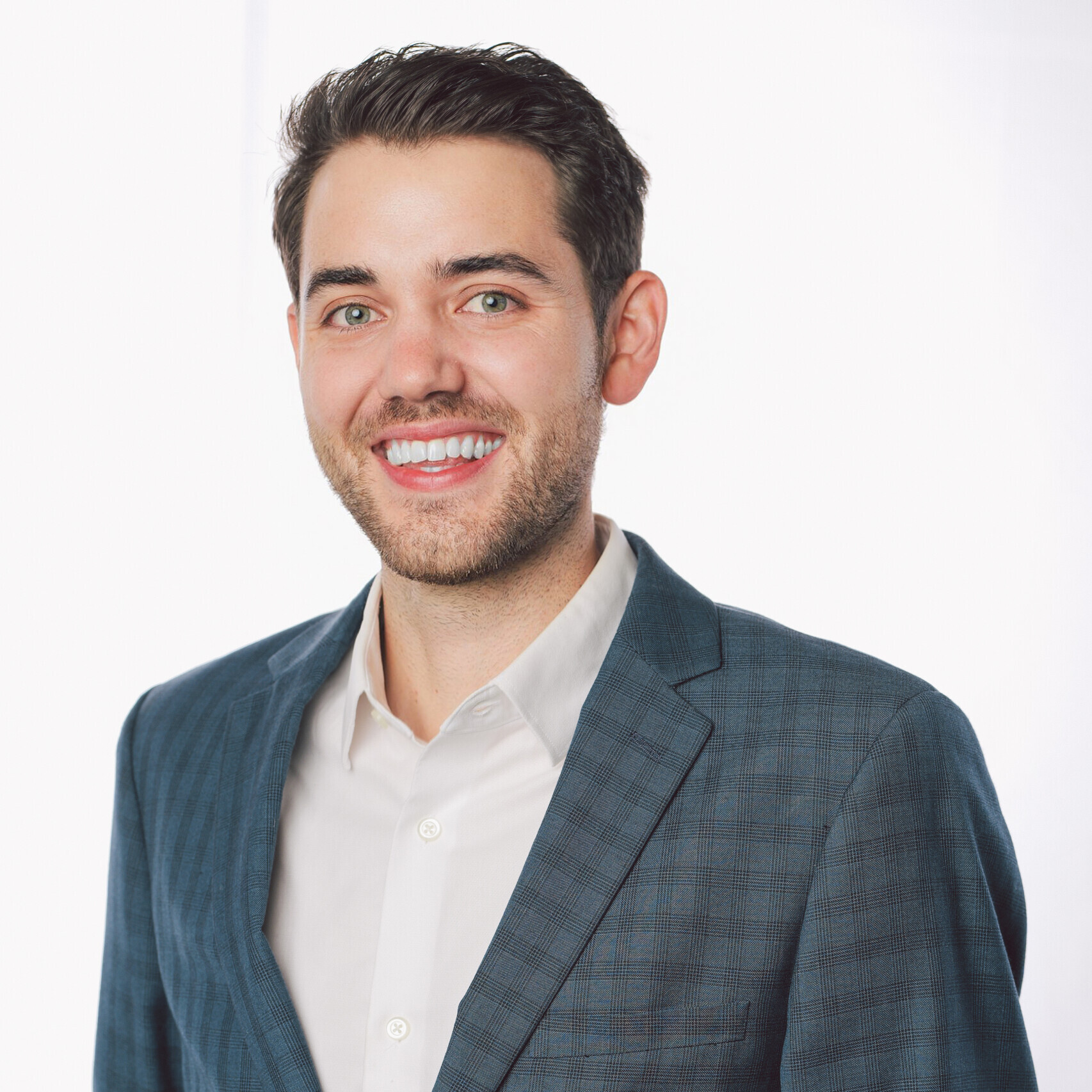


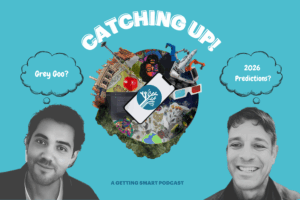

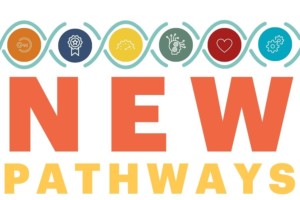

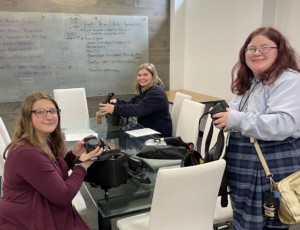
0 Comments
Leave a Comment
Your email address will not be published. All fields are required.